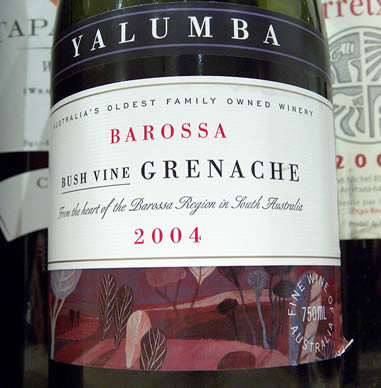Grenache: Adding Complexity to Blends Around the World
Grenache- that is,
Grenache Noir, not Grenache Blanc- is consistently referred to in the wine
world, both as a varietal wine, and as an addition to many of the big reds,
such as Cabernet Sauvignon, because it does so well at balancing flavors and
adding complexity. It is also well-known because it is the most widely grown
grape, now located in regions such as Spain, California, Australia, and of
course, France. To understand this varietal more holistically, we will take a
look at the taste profile, history, traits and trends of this grape.
First of all, what
does this grape taste like? Interestingly enough, it is often known for its
feel and texture inside of the mouth rather than its taste. It is considered to
be full and fleshy, almost chewy. It’s taste is influenced by low levels of
malic acid and tannins, but does have many jammy/fruit flavors (especially
blackberry or black currant). Due to its lack of tannin structure, it does not
last long in the bottle before oxidizing. Other flavors that are commonly used
to describe this variety include cinnamon, orange and vanilla, toast or smoke
after being aged. The old-world style often contains hints of herbs, such as
tobacco and oregano.
The
history and traits of this grape helps to explain why it is so wide-spread. The
grape originally grew in Spain, but due to its hardiness on the vine, it was
easily transported to other regions. Additionally, a phylloxera epidemic came
through Europe in the late 1800’s, which favored the planting of the resistant-Grenache
throughout Europe. This grape is also considered hardy for these reasons:
Firstly, the grape vine often doesn’t need a wooden frame and can grow freely.
Additionally, this grape is water-hardy, meaning that it can tolerate higher
levels of moisture than many other grapes. Lastly, it has an extremely high
sugar content, resulting in high potential alcohol levels, a trait that is
prized in wine grapes. Some Spanish Grenaches can get above 15%. Another notable trait of this wine is
that it has a thin skin which results in a weak tannin structure. This
partially explains its lack of use as a commonly produced varietal wine.
So
where is this wine produced? The Grenache from France is often considered the
most desirable. It is most common in the Rhone Valley and in
Languedoc-Roussillon. It is commonly used in Rhone reds and Rhone roses and is
often the primary grape in Southern Rhone blends. It’s use in roses makes sense
due to it’s light skins. In France, Grenache is known for its cherry flavor,
lavender and tobacco., as well as its lighter alcohol content (Rhone is a
cooler area, and therefore this grape does not produce as much sugar, and
therefore alcohol, as it does in other regions). As mentioned, Spain is the original region for this grape.
In Spain, varietal wine from Grenache (here more commonly known as Garnacha) is
more common than in other parts of the world, especially from their old vines
in Rioja. However, it is still more common to blend Grenache with Tempranillo,
a famous wine in the region. Grenache in Spain is typically light and has more
fruit components for consumption by the every-day-man. Australian Grenache used
to be the most-widely planted grape until Shiraz was discovered, but it still
has a strong presence. In this region, it is most commonly used in it’s GSM
blend, referring to Grenache, Shiraz and Mouvedre. Grenache came to the US in
the 1860’s. It is typically used as a blend and has not made its way into the
wine language of the everyday consumer just yet. It is more fruity and can even
have flavors of licorice or flowers.
Globally,
Grenache grows on about 202,000 hectares of land (50% from France, 20% from
Spain, and the rest coming from the US, Australia and Italy). Unfortunately,
acreage has been falling in the past few decades as it becomes replaced by
Cabernet and other other more bold grapes. This grape is not going away,
however, because it is still the backbone of many prominent wine blends, and is
paired well with many popular spicy and herby foods, such as curry and roasted
meats. While Grenache may never serve as a huge varietal wine, it adds much
flavor and complexity to Cabernets, Syrah’s and even merlot.
Sources Cited:
http://winefolly.com/review/grenache-wine/
http://www.tablascreek.com/vineyard_and_winemaking/grapes/grenache


No comments:
Post a Comment